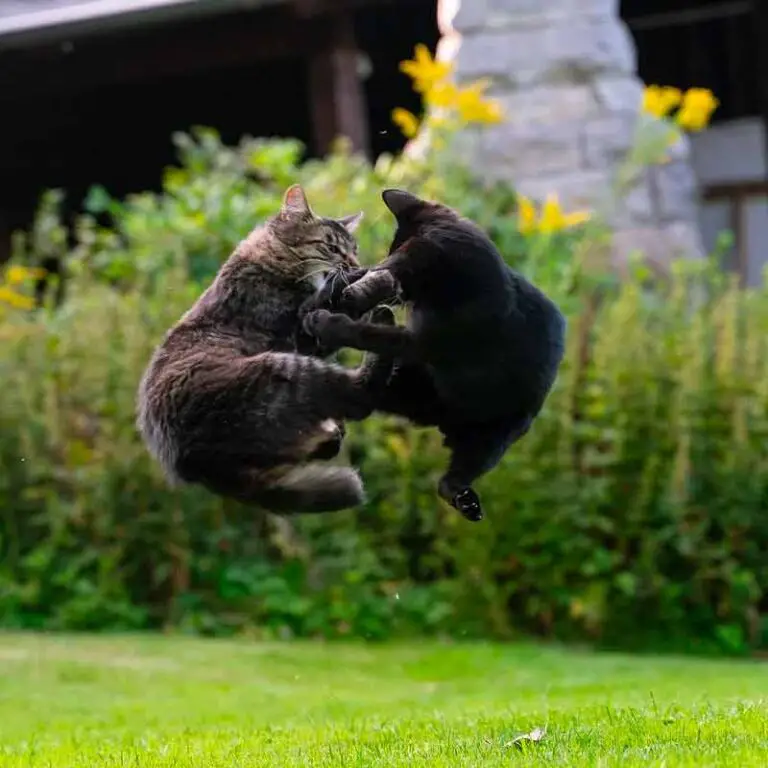
Image Source myanimalzone.com
Understanding the Dynamics of Feline Behavior
Cats are notorious for their complex behaviors and unique social structures. Within their hierarchies, dominancy and aggressiveness can sometimes lead to confrontations. In this article, we delve into the question everybody wonders: Can a cat kill another cat?
The Nature of Feline Relationships
In order to grasp the possibility of feline fatalities within intra-species conflicts, it’s crucial to comprehend how cats relate to each other. Cats are known to establish hierarchies within multi-cat households, often fueled by instinctual behavior and survival instincts.
Unlike dogs, feline social structures tend to be more fluid and less rigidly defined. However, conflicts can still arise in certain situations. To better understand potential lethal outcomes, we explore the factors that may determine whether or not a cat can kill another cat.
The Role of Size and Strength
Sizes and levels of muscularity play significant roles in determining the outcome of feline disputes. Larger and stronger cats typically have an advantage over their smaller counterparts. However, it’s essential to note that size alone does not guarantee victory in confrontations between cats.
Although powerful felines may possess a physical advantage, smaller or more agile cats can compensate for their size disadvantage through quick reflexes, strategic maneuvering, and their ability to exploit vulnerabilities. Factors like age, health, and fighting experience can also influence the outcome, making it a multifaceted challenge to predict whether a cat can truly kill another cat.
Aggression Levels and Territorial Instincts
Another critical factor determining the potential lethality of feline conflicts is the innate aggression levels and territorial instincts of the cats involved. Some cats are inherently more dominant and prone to aggression, while others are more docile and conflict-averse.
Disputes over territory can escalate, especially when attempting to establish dominance over resources such as food, litter boxes, or preferred resting spots. It’s important for cat owners to understand these dynamics and take appropriate measures to minimize the potential for serious altercations.
Evaluating the Risks and Ensuring Feline Well-being
Signs of Aggression and Potential Danger
While it is rare for a cat to kill another cat, it is essential to recognize the warning signs of serious aggression. These signs may include intense staring, hissing, growling, raised fur, exposed claws, and a striking posture.
Understanding these warning signs allows owners to intervene and prevent serious harm. Separating cats, providing separate resources, and seeking assistance from a professional animal behaviorist can help manage and counteract aggression within multi-cat households.
Introducing New Cats and Managing Social Integration
When introducing a new cat to an existing feline household, proper introduction techniques and gradual social integration are crucial. This process minimizes territorial conflicts and allows for smoother dynamics among all cats involved.
Providing each cat with their own space and resources, utilizing pheromone diffusers to reduce stress, and gradually increasing supervised interactions are effective strategies for ensuring a harmonious coexistence between cats.
Consulting with Experts for Professional Guidance
If conflicts escalate and become a regular occurrence, seeking professional guidance from a veterinarian or an animal behaviorist is highly advisable. These experts can conduct thorough assessments, recommend relevant behavior modification techniques, and provide tailored strategies to alleviate tension and aggression.
In Conclusion
While the idea of one cat killing another is not common, feline hierarchies and aggressive interactions can lead to serious consequences. Understanding the dynamics of feline behavior, recognizing the signs of potential danger, and taking appropriate measures are crucial for ensuring the safety and well-being of all cats involved.
By maintaining a vigilant eye on their interactions and providing a harmonious environment, cat owners can foster a peaceful coexistence among their feline companions.